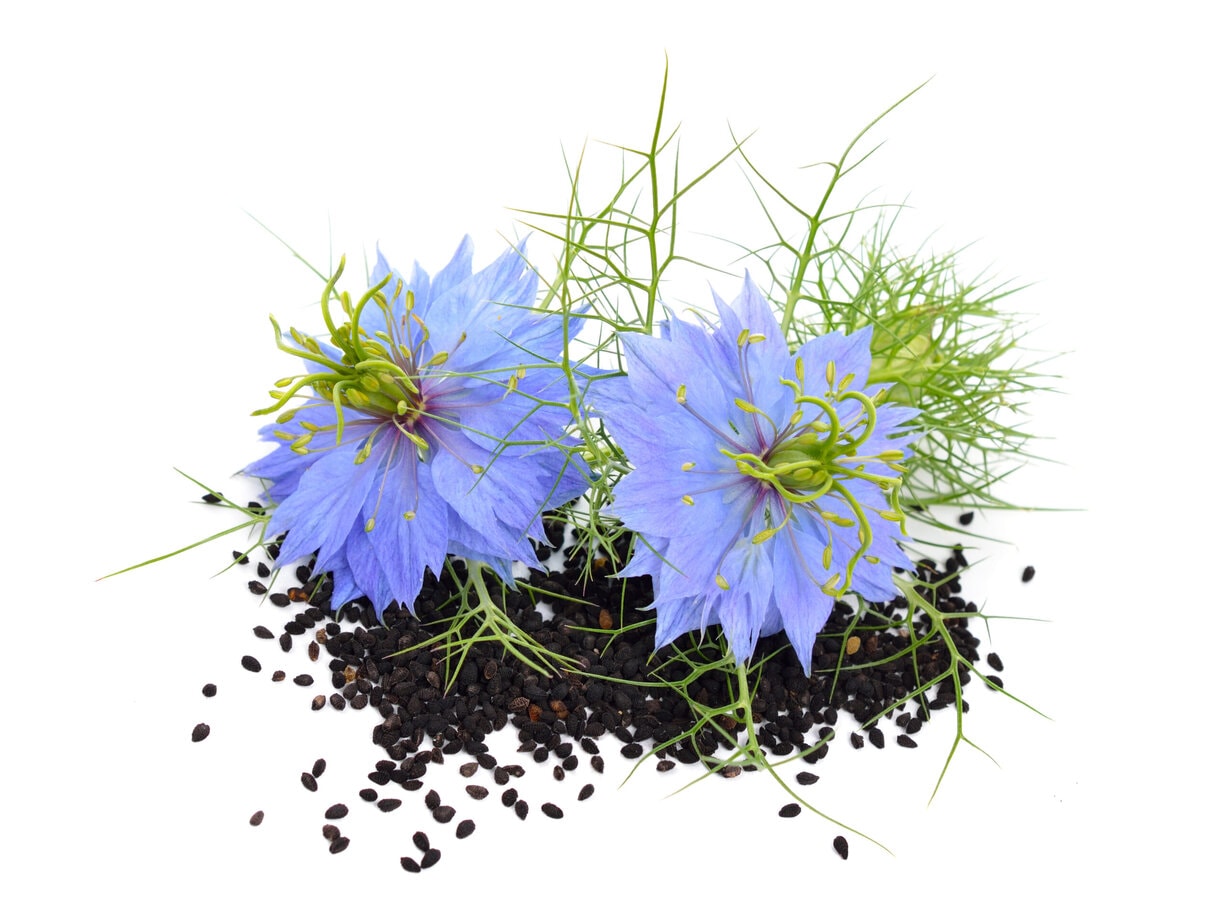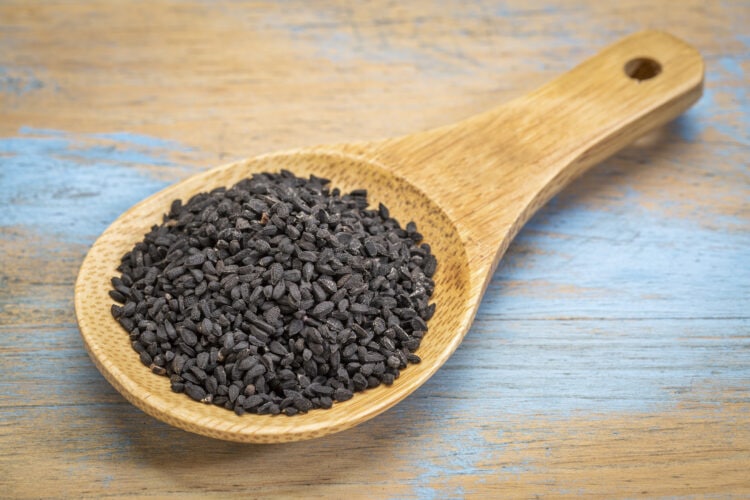Black cumin, or nigella, is traditionally used as a spice in Indian, Middle Eastern and North African cuisines, where its intense flavours and crunch are particularly interesting in the preparation of curries, soups, stews, and much more…!a0
Black cumin, what is it?
Black cumin, also known as Nigella, is originally an herbaceous plant that comes straight to us from Southwest Asia. The spice appears as a tiny black seed, coming directly from the flowering plant botanically known as “Nigella sativa”.
The condiment is sometimes referred to by other names, such as “black onion seeds” or “black sesame seeds”, which can be quite confusing for users since it has nothing to do with the onion or sesame families.

Furthermore, the spice is not even related to cumin as such; it is a more complex ingredient that will enhance the taste of your dishes by giving them bitter, intense aromas. There’s a reason it has been used for thousands of years on the Asian continent!
Origin of black cumin
Black cumin is a Eurasian spice. It is mainly cultivated from the Mediterranean basin to the Middle East; it can even be found in Spain! You will mainly find it in countries with a warm, sunny climate. This plant does not tolerate frost.
What does black cumin taste like?
Black cumin seeds have a powerful aroma, with slightly bitter and spicy flavours and notes of pepper, oregano and onion. On the nose, they inevitably release a fresh, light scent, notably thanks to their citrusy flavours…
Which makes black cumin an excellent asset for a great majority of recipes, both savoury and sweet! In Indian and Middle Eastern cooking, it is often used in meat and vegetable dishes, curries, stews, marinades, bread and even cheese.a0
Cumin and black cumin, what’s the difference?
Despite what one might think, cumin and black cumin are two completely different spices; in terms of appearance, use and flavour alike. Cumin is an elongated brown-greenish seed whereas black cumin is a black seed.
As for taste, cumin has a more earthy flavour topped with a citrus note. Black cumin, on the other hand, is more intense and more bitter than regular cumin, which will determine how you use it. In short, they are polar opposites—it’s impossible to confuse them!
How to use black cumin?
With its strong aroma, black cumin is a versatile spice that can accompany a large number of dishes, starting with curries, stews, soups, marinades, sauces, salads, lentil dishes and sautéed vegetables (especially root vegetables)… It’s the perfect time to try an authentic Japanese curry!

Black cumin is also very effective sprinkled over bread, bagels, biscuits or naan, to stay in the Asian theme… Texture and flavour will definitely be there.a0
Just like pepper, you can use black cumin seeds whole or crushed, according to your taste.
How to replace black cumin?
There are several ways to replace black cumin seeds if you don’t have any on hand. Celery seeds, oregano, cumin seeds and black sesame seeds, for example, make good substitutes.
Each of these ingredients will recall the more herbaceous, citrusy or nutty notes that you can indeed find in black cumin seeds. The flavours will certainly be somewhat different, but just as effective.a0
Where can you find black cumin?
It is still tricky to find this kind of product in supermarkets because they very rarely stock it. Black cumin seeds are easier to find in specialised shops, stores selling Asian products or online.
How to store black cumin?
Like all spices, black cumin seeds should be stored in an airtight container away from heat and humidity. This way you can easily keep them for several months.

